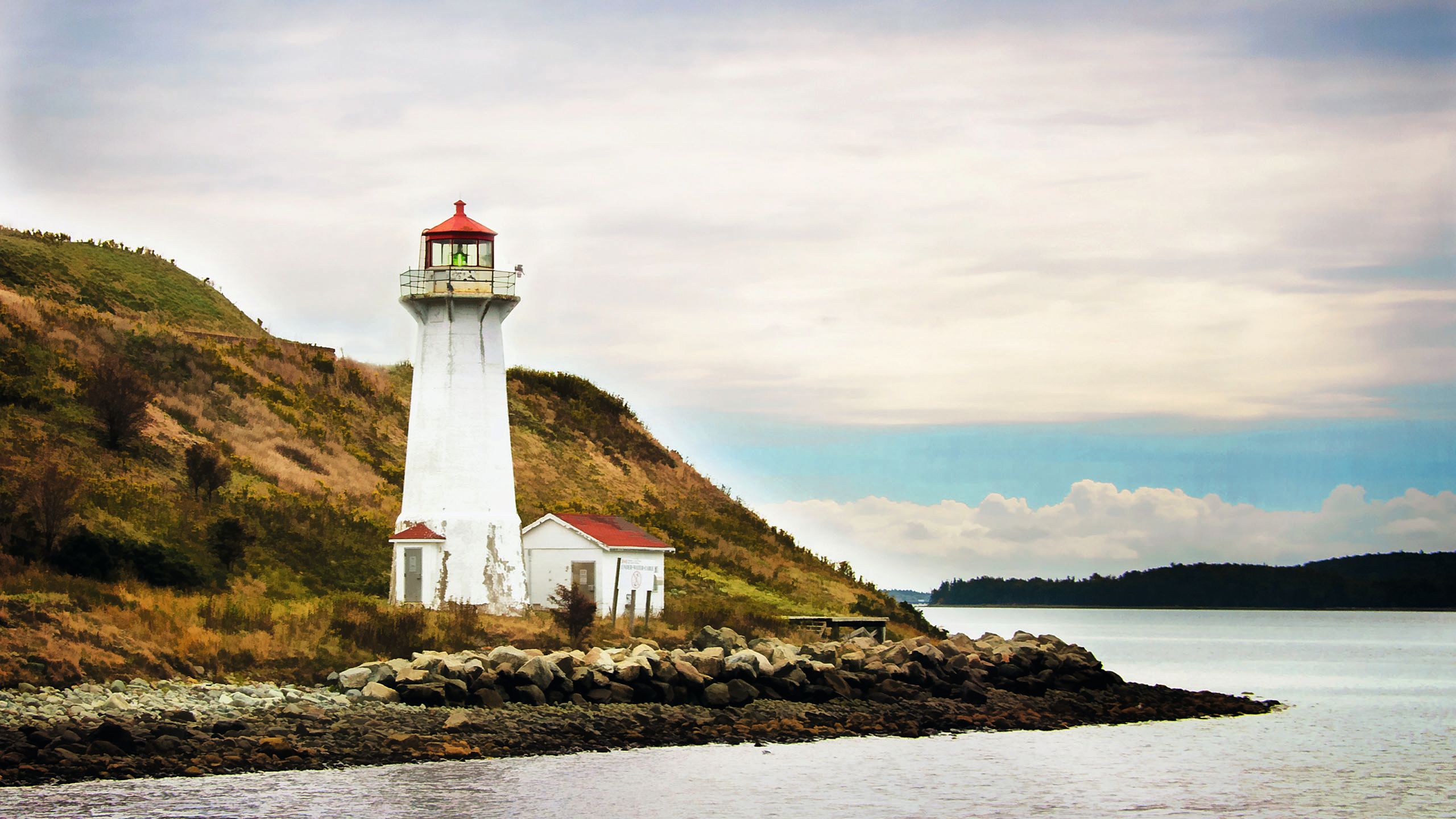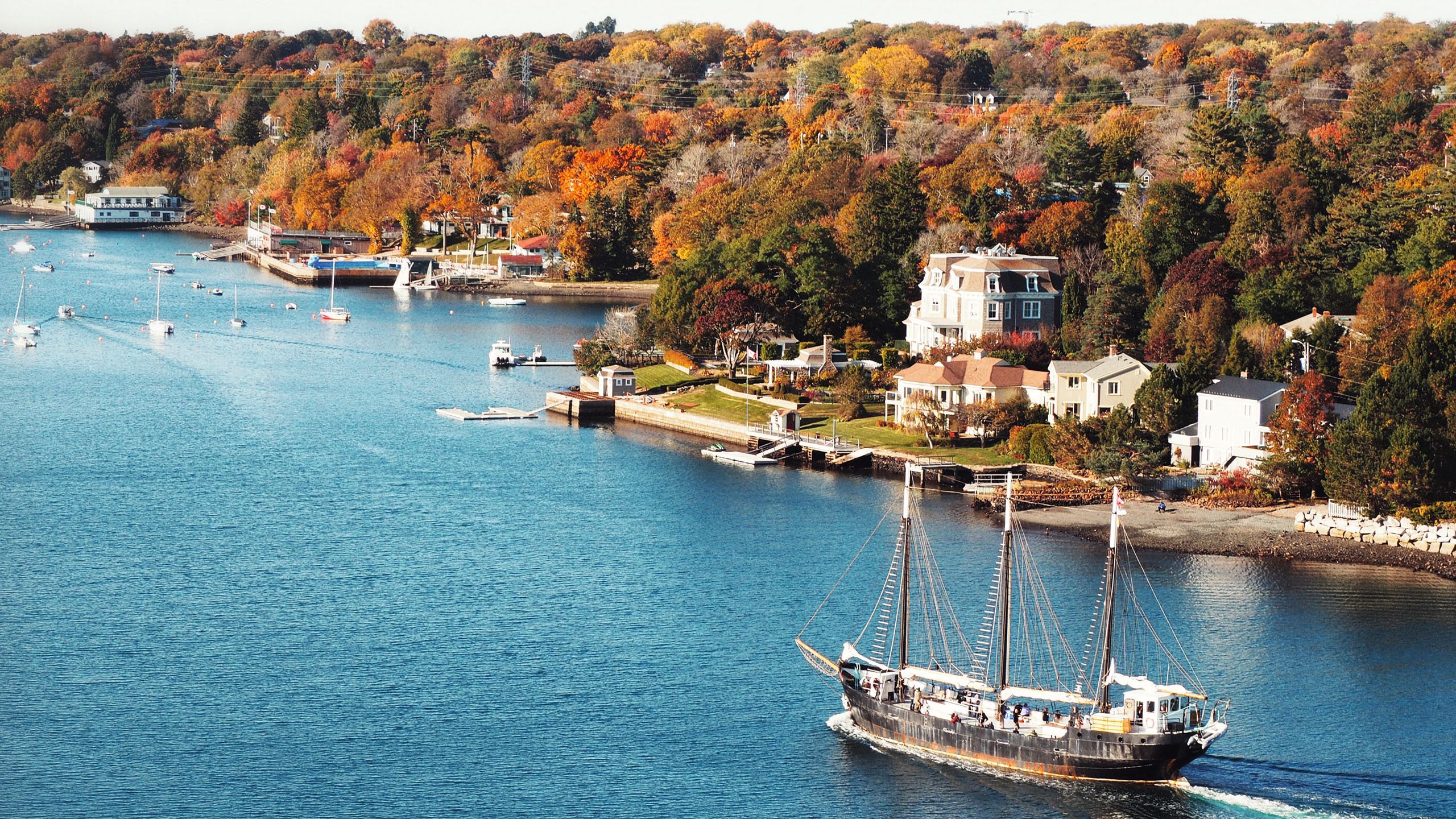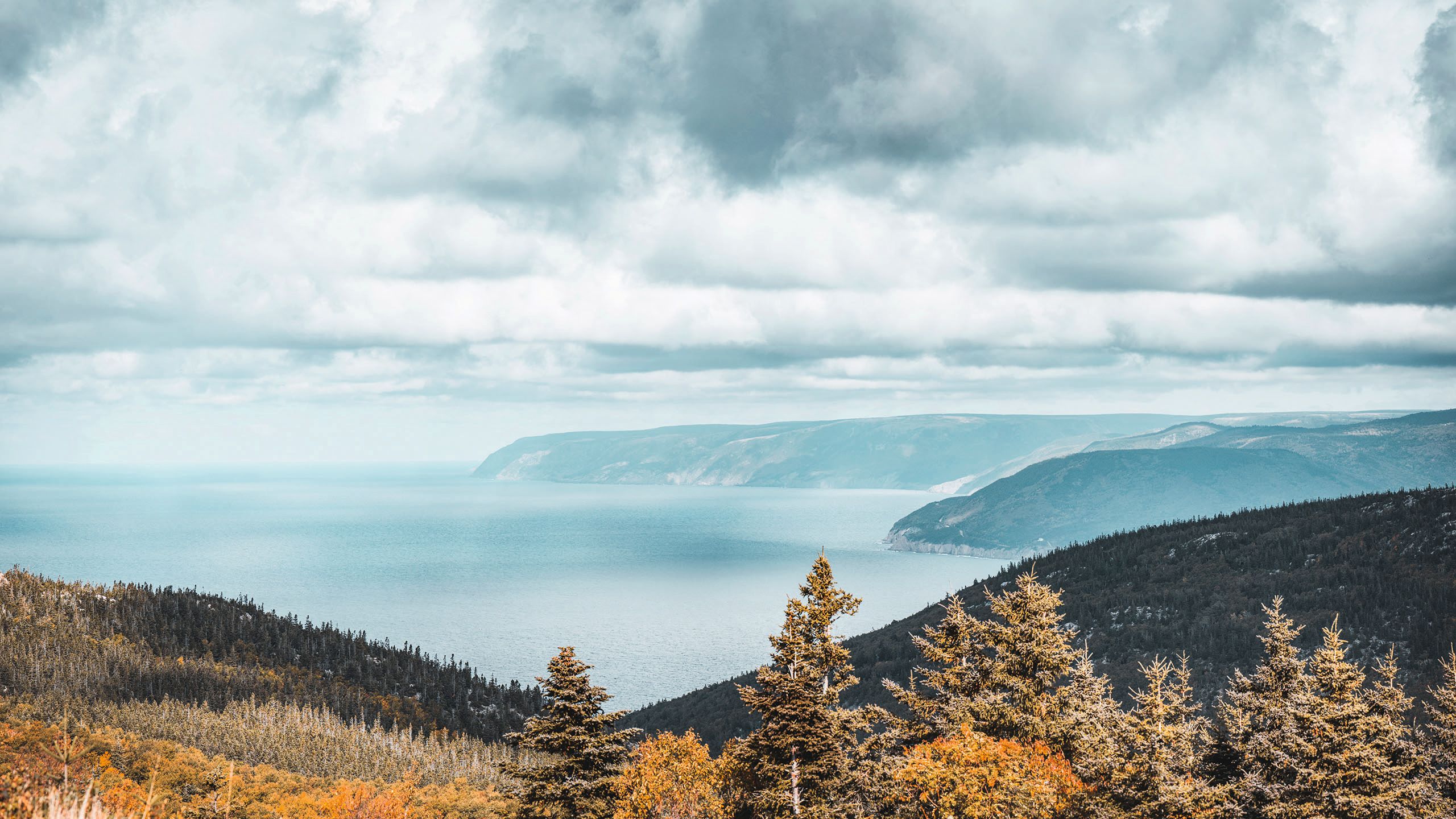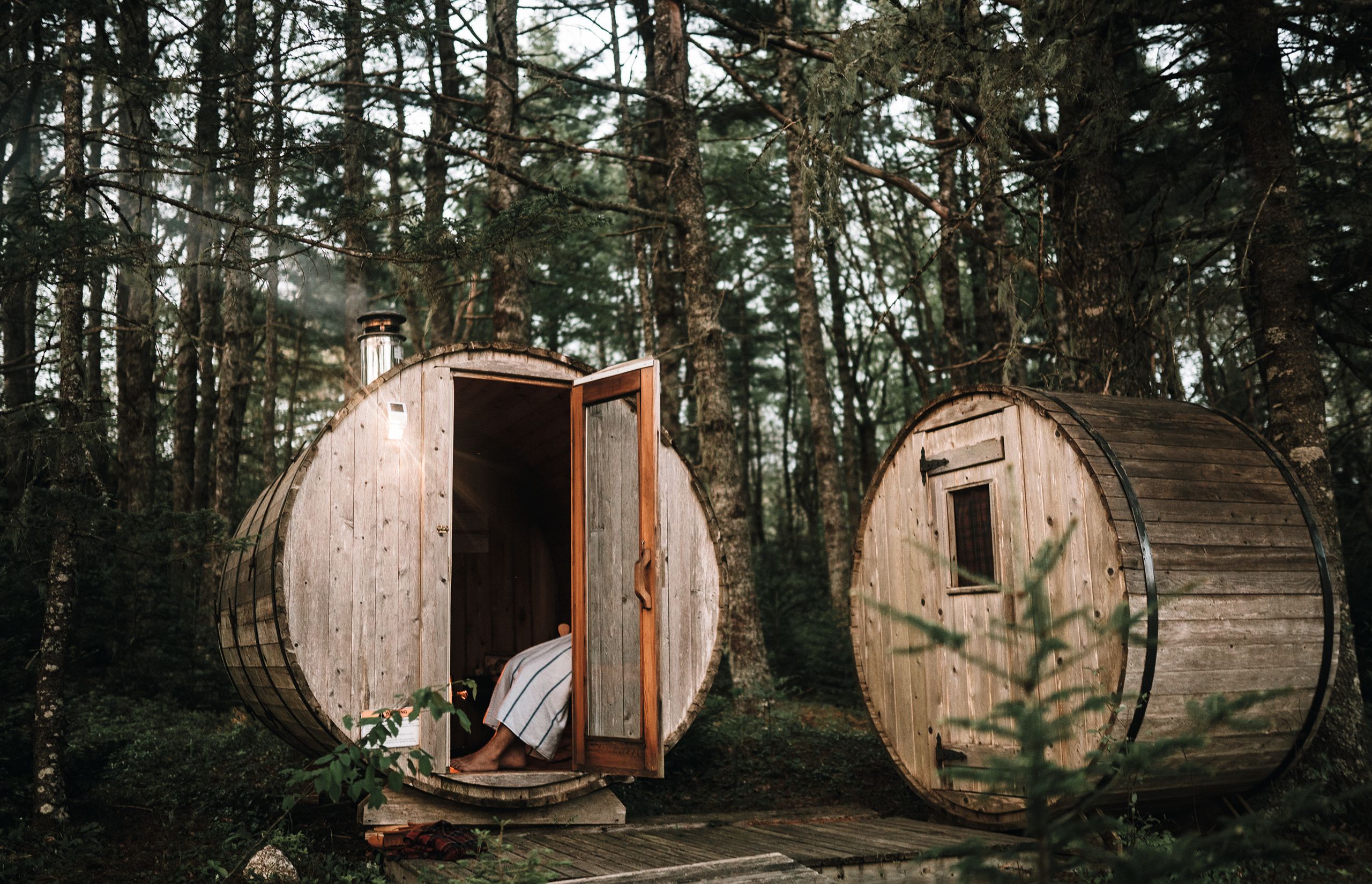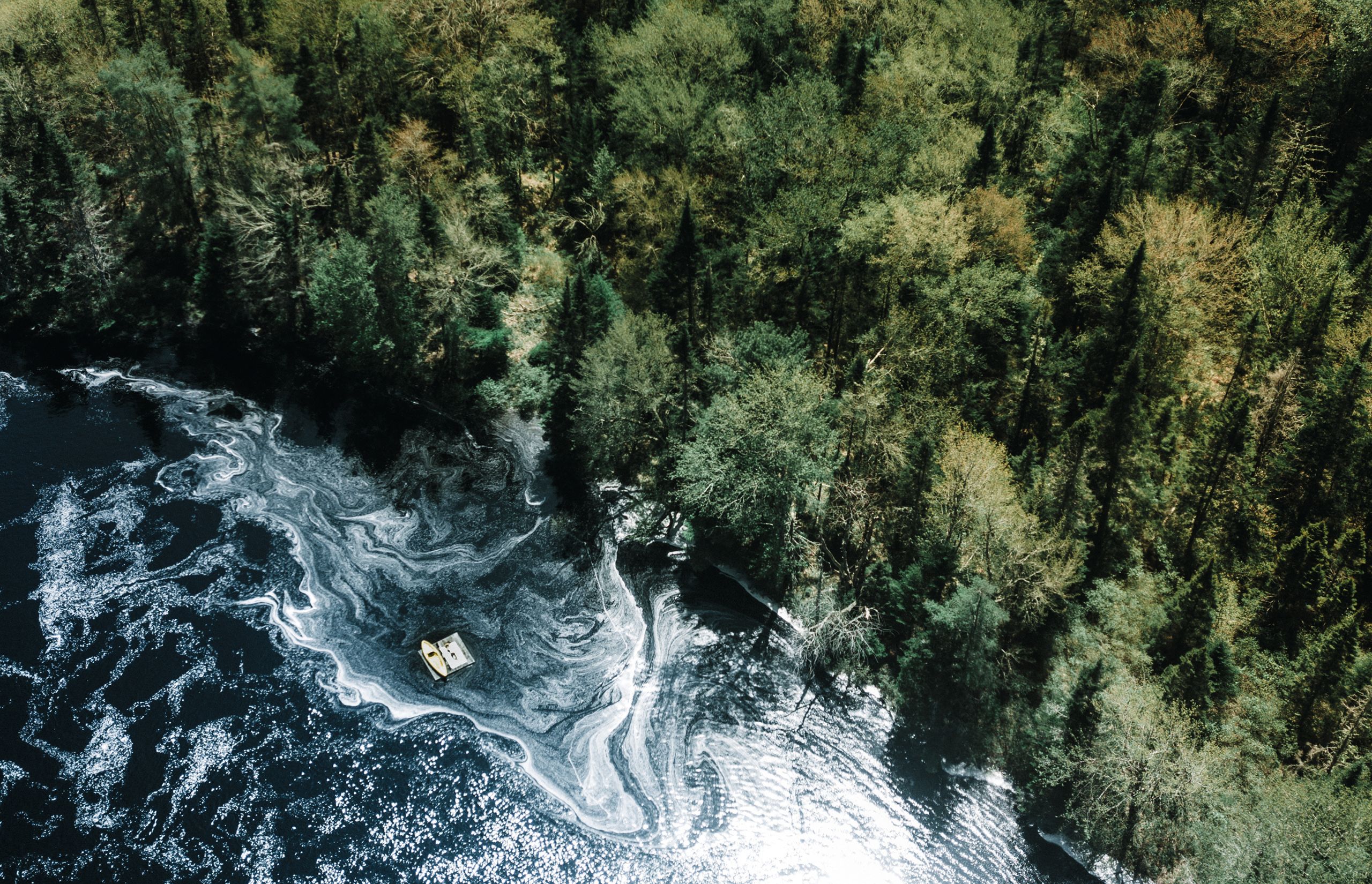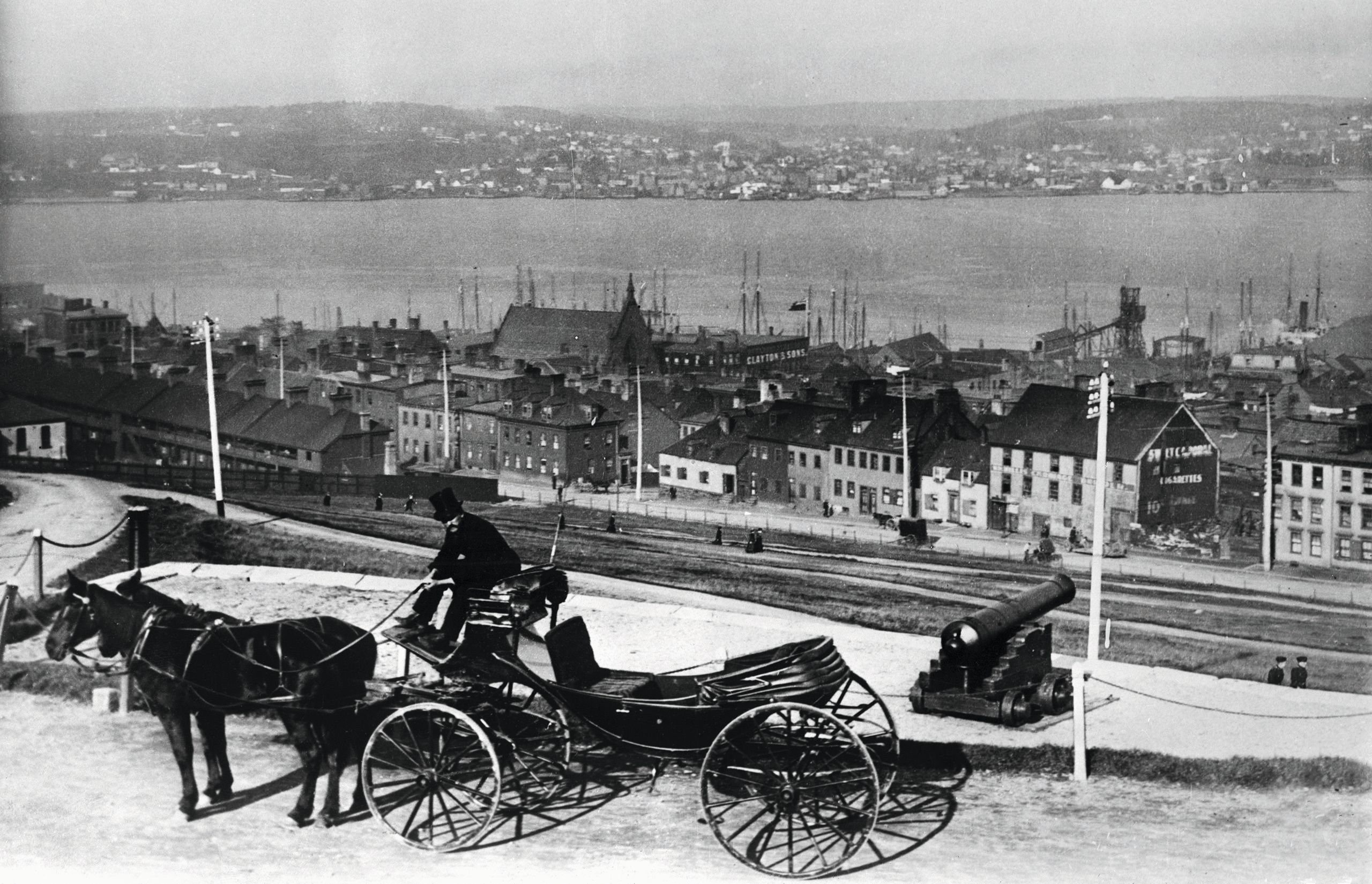SALT IN THE VINES
A superyacht voyage through Nova Scotia’s untamed beauty
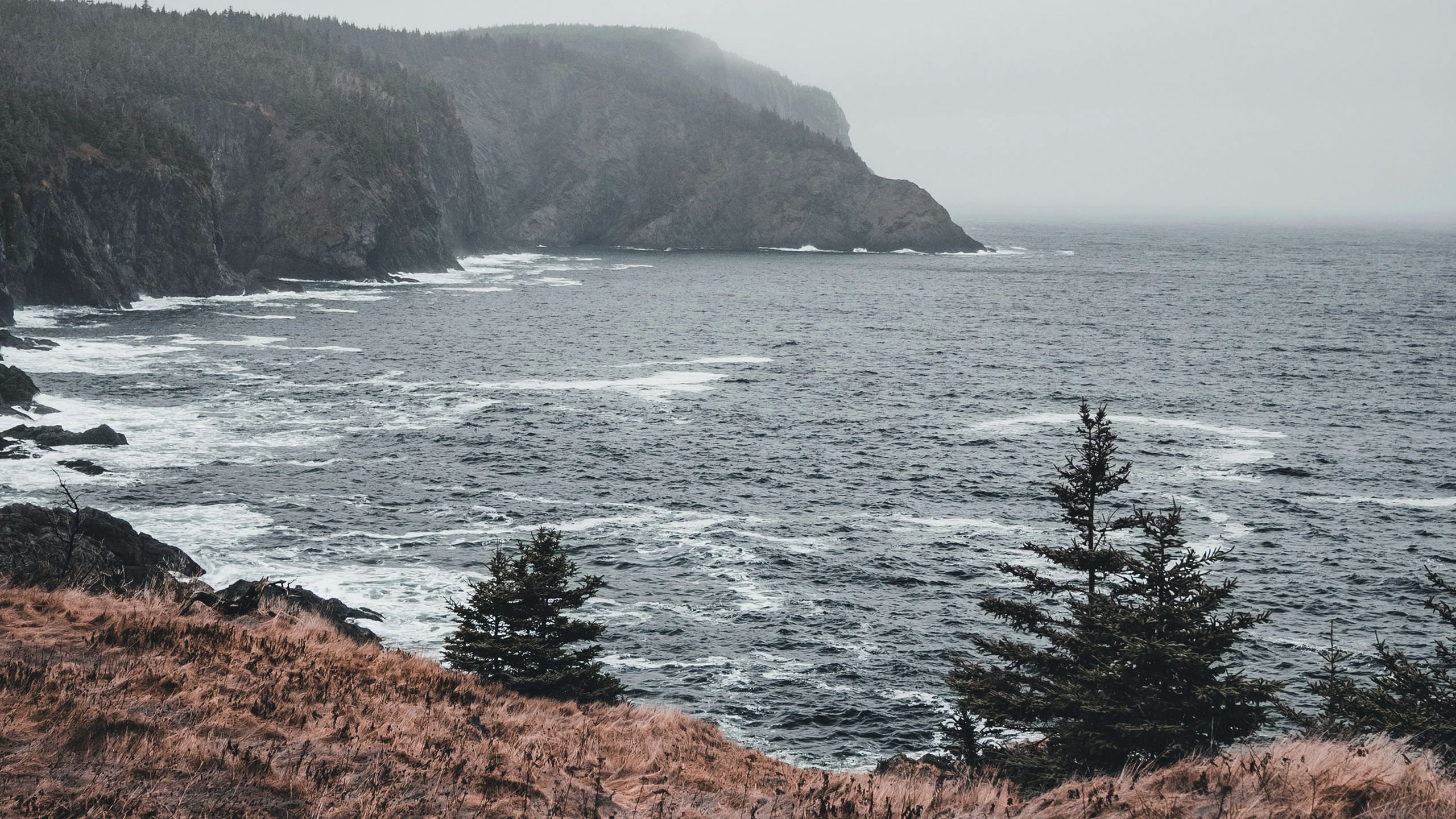
Nova Scotia may not be an obvious superyacht destination, but with its salt-stung cliffs, sprawling vineyards and a lobster renaissance under way, Canada’s quiet coast should be on the list, discovers Georgia Boscawen
ERIK MCLEAN ON UNSPLASH
The vertiginous pine-topped crags of Cape Breton Island in the Canadian province of Nova Scotia look strangely familiar. This is my first visit to eastern Canada, yet the limestone Cabot Cliffs draped in fog on the island’s north-western coast feel like I’ve seen them before. The resemblance, thankfully, isn’t a figment of my imagination.
Nova Scotia is Latin for New Scotland, a name bestowed after Scottish settlers arrived in the late 18th century, following the Highland Clearances, bringing with them Gaelic language, traditions and culture. I like to think that their arrival would have felt like a homecoming of sorts: the coastline of Nova Scotia mirrors Scotland’s own – albeit with better weather.
GETTY IMAGES Nova Scotia’s 13,300km of coastline are dotted with lighthouses, towns – including the capital, Halifax and vineyards
GETTY IMAGES Nova Scotia’s 13,300km of coastline are dotted with lighthouses, towns – including the capital, Halifax and vineyards
What you are still unlikely to come across here is the silhouette of a superyacht. But they do visit: in the last year (from June 2024), 28 yachts have spent time in Nova Scotia, according to BOATPro, including 90-metre Dreamboat and 45.7-metre Scintilla Maris. The majority of yachts have been private, but there are no great restrictions on charter.
GETTY IMAGES The capital, Halifax
GETTY IMAGES The capital, Halifax
We cruised from Iceland to St John’s (capital of the Newfoundland and Labrador province) and then made our way down along the stunning coastline to Nova Scotia,” says Captain Feite-Jurre de Vries of Scintilla Maris. “It was truly a memorable passage. We spent some time in Halifax, which was particularly special due to its rich maritime heritage.”
MINH ON UNSPLASH
MINH ON UNSPLASH
Much like its namesake, Nova Scotia’s serrated coastline is dramatic – twisting around bays to rugged headlands, often punctuated with lighthouses (187 to be exact). It is also long, stretching for almost 600 kilometres from Bay Saint Lawrence near the Nova Scotia Highlands, to Yarmouth on its southwestern point.
We cruised from Iceland to St John’s (capital of the Newfoundland and Labrador province) and then made our way down along the stunning coastline to Nova Scotia,” says Captain Feite-Jurre de Vries of Scintilla Maris. “It was truly a memorable passage. We spent some time in Halifax, which was particularly special due to its rich maritime heritage.”
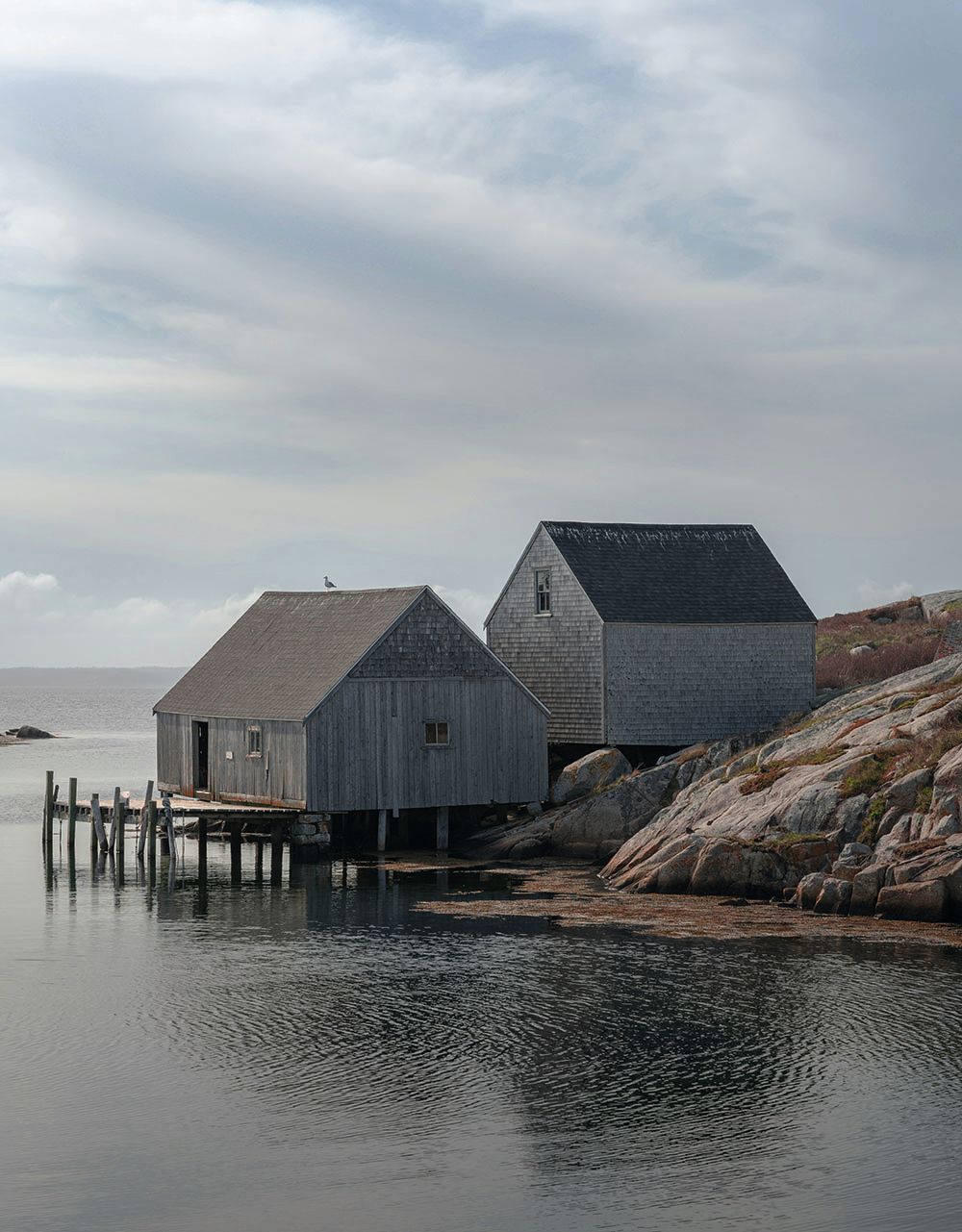
Much like its namesake, Nova Scotia’s serrated coastline is dramatic – twisting around bays to rugged headlands, often punctuated with lighthouses (187 to be exact). It is also long, stretching for almost 600 kilometres from Bay Saint Lawrence near the Nova Scotia Highlands, to Yarmouth on its southwestern point.
GETTY IMAGES The view from MacKenzie Mountain of the Gulf of Saint Lawrence in Cape Breton Highlands National Park
GETTY IMAGES The view from MacKenzie Mountain of the Gulf of Saint Lawrence in Cape Breton Highlands National Park
Small beaches are dotted around the peninsula and there are thousands of quiet anchorages near quaint fishing villages and hiking trails that weave across the peninsula.
Nova Scotia enjoys more predictable seasons than its ancestral twin, with mild summers reaching up to 25°C and a comparatively modest 156 days of rainfall (Scotland sees around 260). While it may not rival the balmy climes or glamour of Saint-Tropez, Nova Scotia seems like a good superyacht destination for 2025, as the peninsula’s food and wine scene experiences quiet but confident growth.

Nova Scotia’s cultural fabric extends beyond the familiar names scattered across the map such as Inverness, Dunvegan and New Glasgow; European contact predates the 18th-century Scots. The Norse were the first to settle here around 1000CE, but it was the French who planted deeper roots, founding the first permanent European settlement at Port Royal in 1605.
These early settlers became known as Acadians – and in their eyes, no true Arcadia was complete without wine. Just six years after settling, they planted the region’s first vines along the Bear River, quietly sowing the seeds of a viticultural legacy that would take centuries to truly come to fruition.
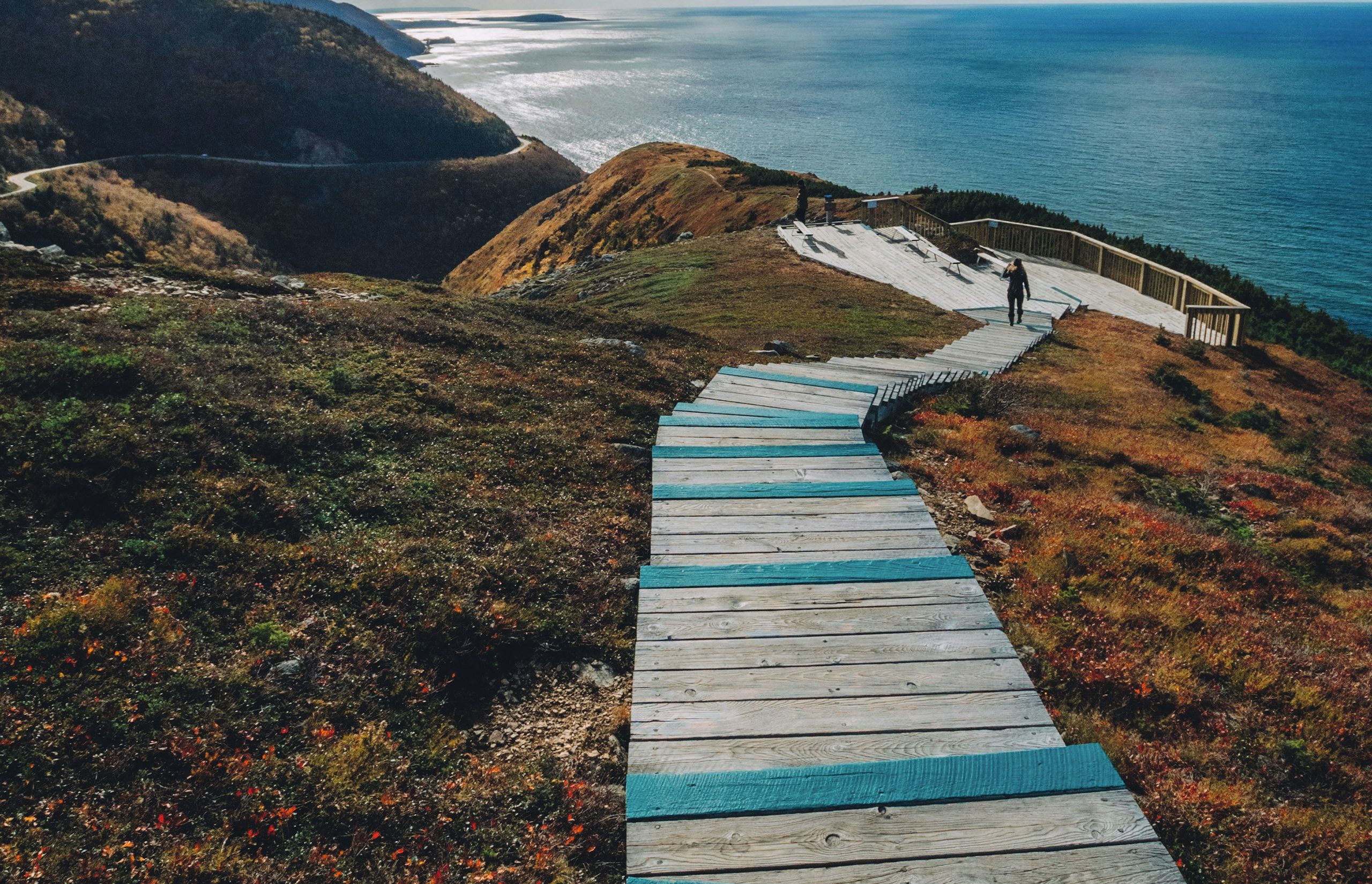
“Do you remember the sparkling wine renaissance in the UK?” asks Justine Lalonde, wine export navigator of the Wine Growers of Nova Scotia. “We are experiencing this now.” This New World wine region is home to 20 farm wineries that thrive on Nova Scotia’s unique terroir, cool maritime climate and hybrid grape varieties like L’Acadie Blanc, Geisenheim and Vidal. The region’s white (and only) appellation, Tidal Bay, has fresh, aromatic and crisp characteristics with a saline freshness and bright acidity.
The first vines on Nova Scotia can be traced back to the 17th century when French settler Louis Hébert planted a vineyard along the Bear River on the north coast in 1611. But it wasn’t until 1980 that the first commercial vintage was produced here. Today Nova Scotia produces approximately 211,000 cases a year of red, white and rosé, with more than 480 hectares of vineyards and 62 grape varieties harvested on the peninsula.
COURTESY OF TROUT POINT LODGE
COURTESY OF TROUT POINT LODGE
COURTESY OF TROUT POINT LODGE
COURTESY OF TROUT POINT LODGE
COURTESY OF TROUT POINT LODGE
COURTESY OF TROUT POINT LODGE
COURTESY OF TROUT POINT LODGE
COURTESY OF TROUT POINT LODGE
Known for its lobster, luxury wilderness resort Trout Point Lodge is located in a UNESCO Biosphere Reserve. Top left: Barrel saunas
Nova Scotia’s traditional method sparkling wine is gaining traction from sommeliers around the world. “We’re seeing an openness to our wine styles,” adds Lalonde. “People are looking for fresher styles of wine, really seeking out cooler climate viticulture and new wine regions.”
She explains that Nova Scotia has a period from mid-August through to October that has sunny warm days and cool crisp nights. The grapes can develop these ripe, rich and intense flavours, but still retain that fresh acidity that is unique to the appellation.
“All the places that yachts will be going have some of the
best restaurants near the water”
Nova Scotia’s natural characteristics also offer a clear advantage for wine-loving superyacht guests. Its long, finger-like shape means that you’re never far away from one of the 20 wineries here.
Nova Scotia's long, finger-like shape means that you're never far away from one of the 20 wineries here
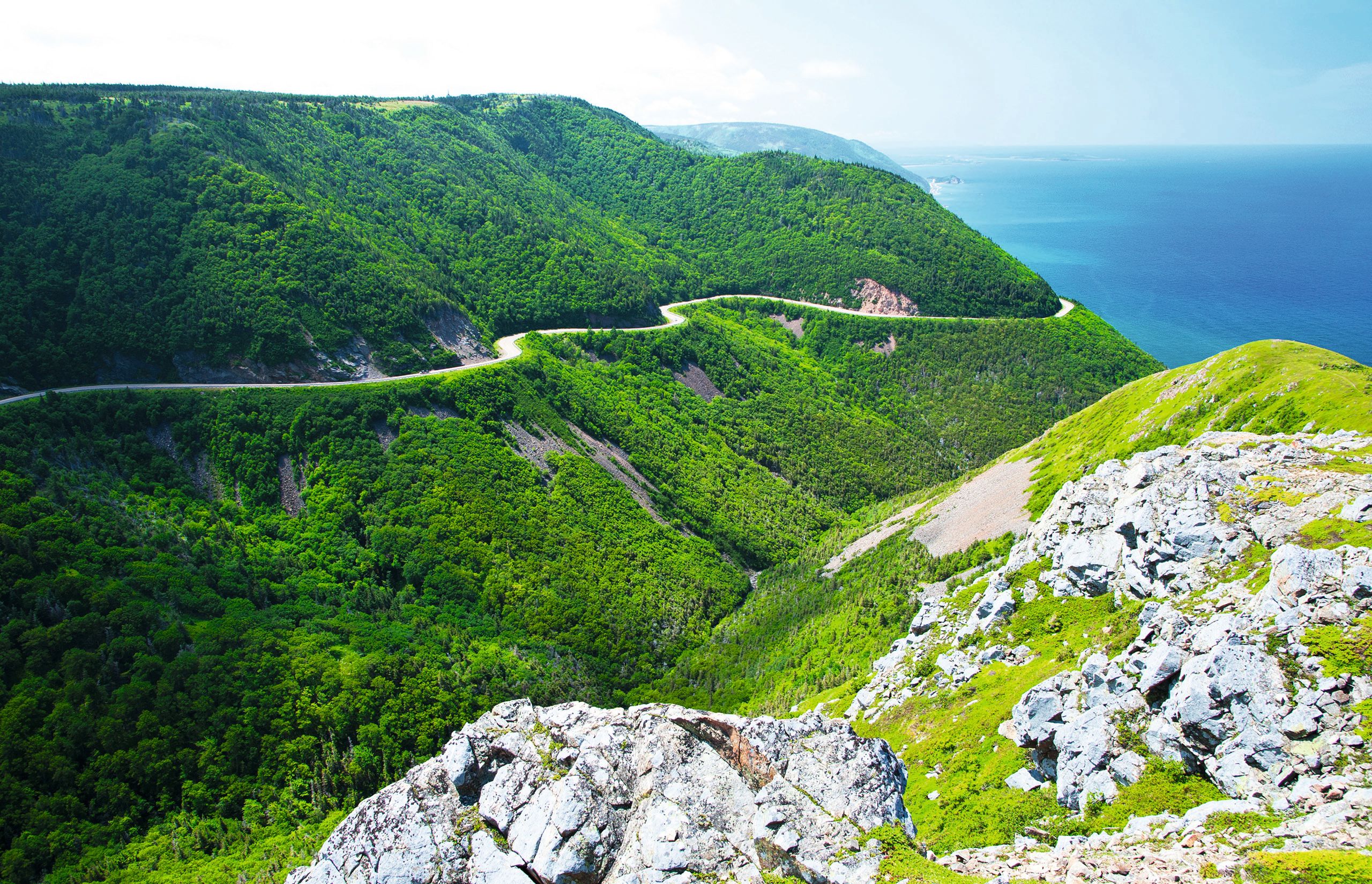
COURTESY OF DOMAINE DE GRAND PRÉ
COURTESY OF DOMAINE DE GRAND PRÉ
COURTESY OF DOMAINE DE GRAND PRÉ
COURTESY OF DOMAINE DE GRAND PRÉ
COURTESY OF DOMAINE DE GRAND PRÉ
COURTESY OF DOMAINE DE GRAND PRÉ
Domaine de Grand Pré opened in 2000 on Atlantic Canada’s oldest farm winery site
Most yachts will head to Halifax, the capital of Nova Scotia, where yachts up to 103 metres can moor at the Maritime Museum wharf. “[The Maritime Museum] offered a fantastic backdrop and a unique opportunity to connect with the local maritime history, a real highlight of our time there,” says de Vries.
The LaHave River Valley region is a few nautical miles west, where Lunenburg County Winery is, as well as what the Wine Growers of Nova Scotia slate as “three of the province’s most beautiful beaches”. The longest coastal stretch, however, is in the north-west in the Annapolis Valley, which is home to Domaine de Grand Pré.
There are thousands of quiet anchorages near quaint fishing villages and hiking trails that weave across the peninsula
Tucked amid the rolling, vine-laced hills of the Annapolis Valley, Domaine de Grand Pré is the oldest winery farm in Nova Scotia and, after a short hiatus, was revived by the Swiss-born Stutz family in 2000. Vines stretch in neat rows among red maples, and there is a distinct saltiness in the air, being just two kilometres from the water.
After a morning walking around the estate to see the Vidal, L’Acadie Blanc and Seyval Blanc vines, the vineyard’s restaurant, Le Caveau, awaits. Here Chef Jason Lynch and his team offer a seasonal four-course tasting menu that celebrates classic Nova Scotia ingredients designed to complement the estate’s wines.
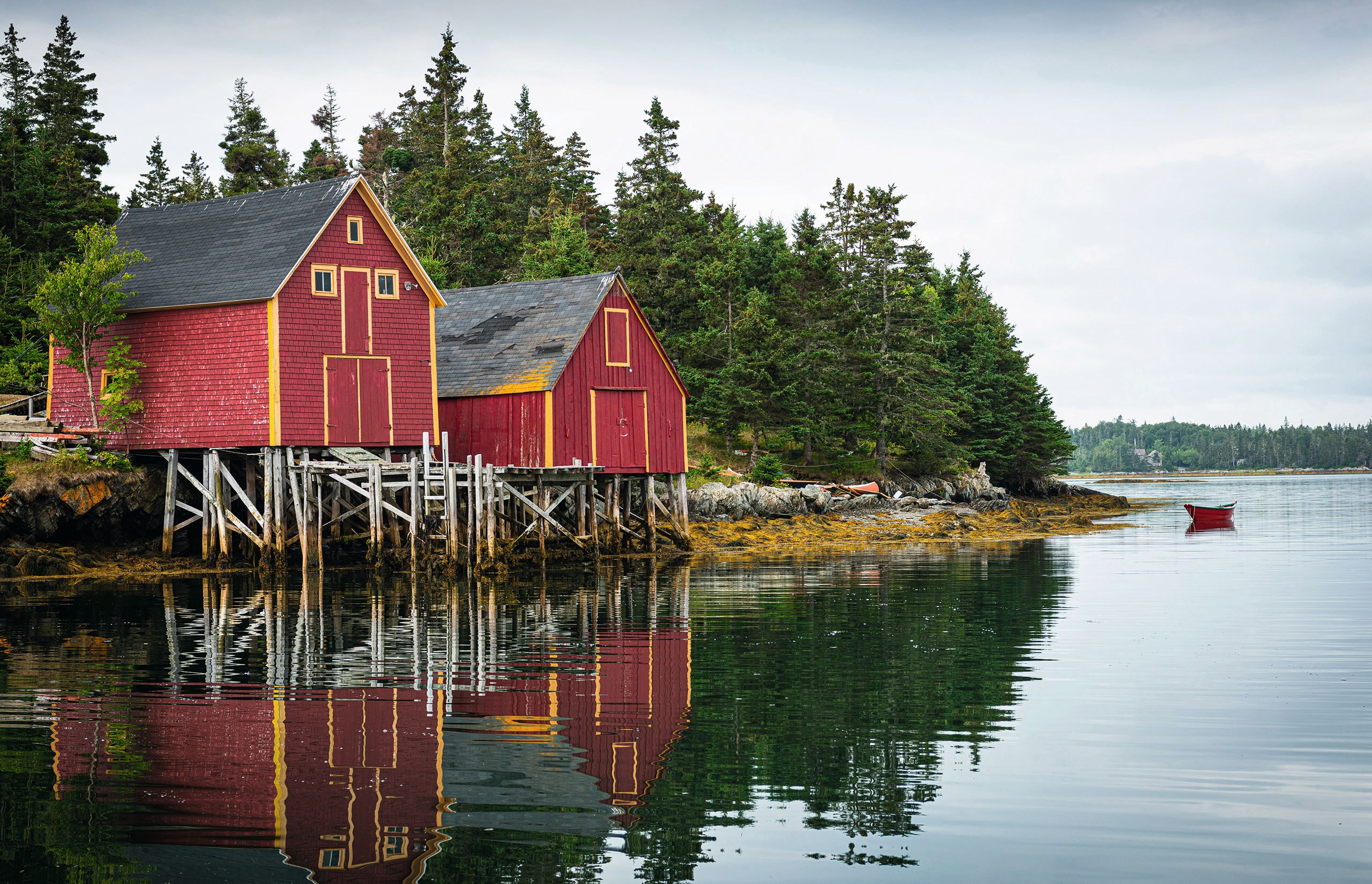
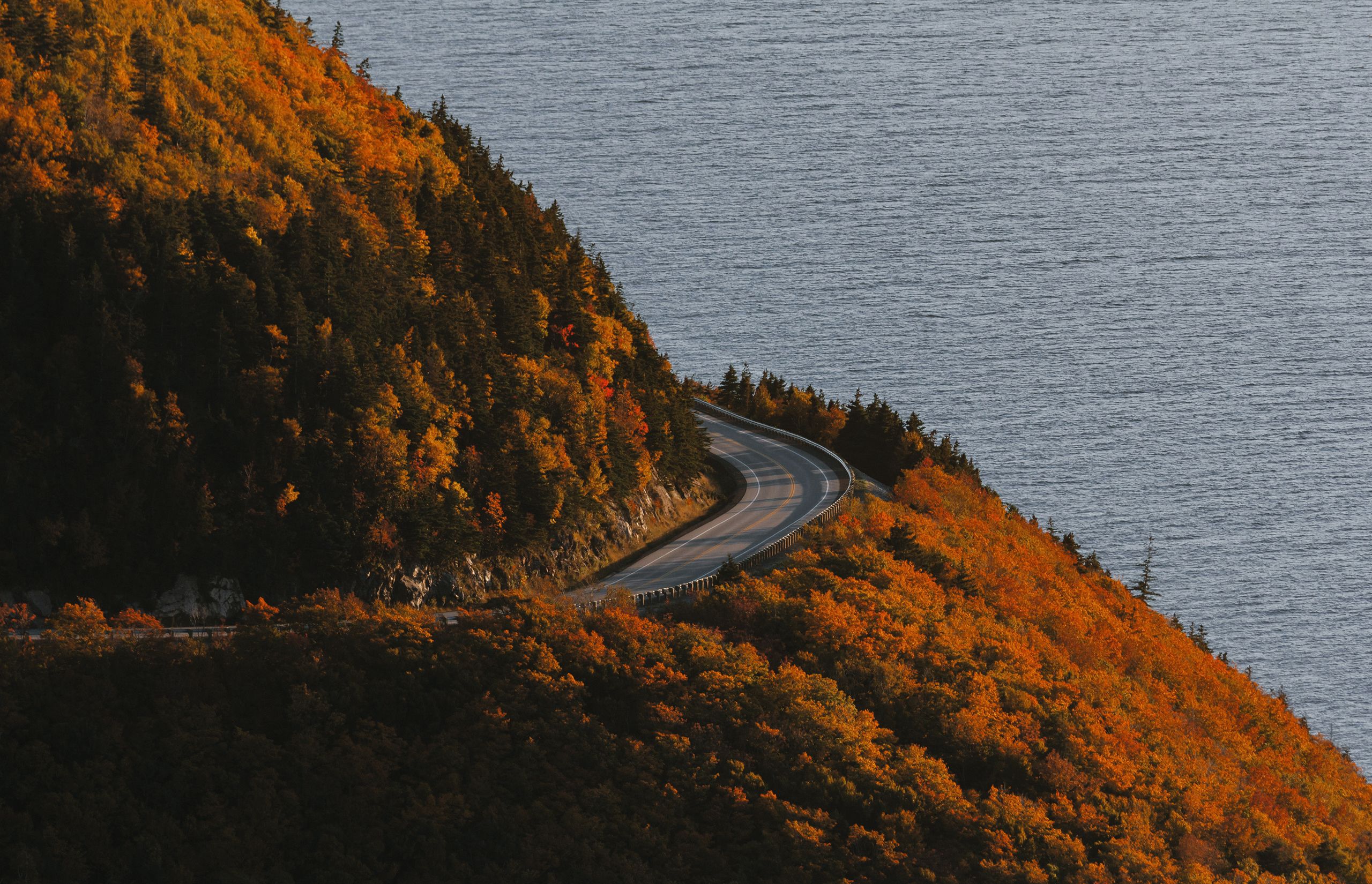
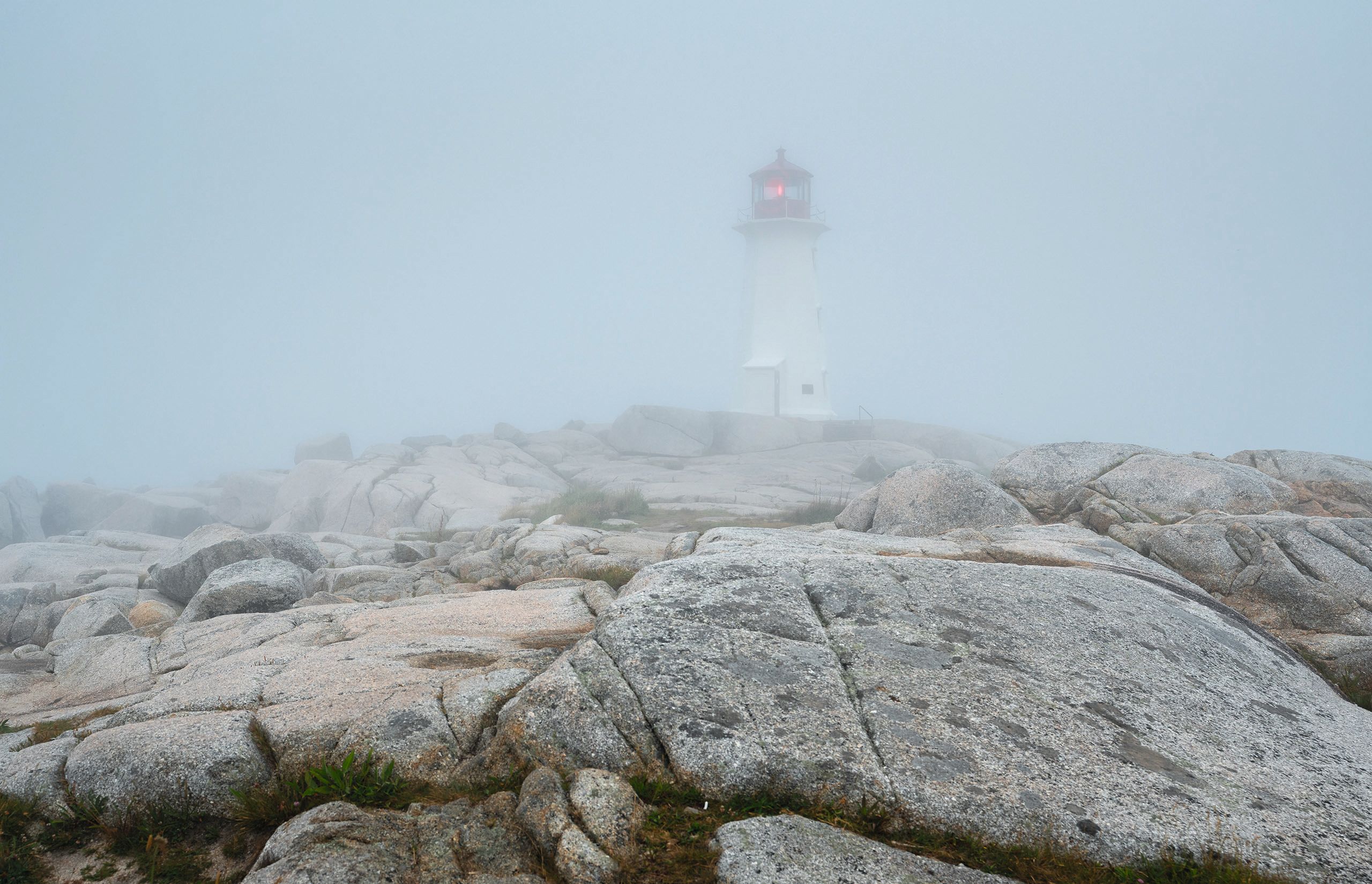

While its viticulture is currently gaining traction, Nova Scotia has long been recognised for something else – lobster. A perfect accompaniment to the province’s bright and fresh white wine (and light reds), its lobster is known for its abundance in sustainable fishing grounds and sweet, tender meat.
For a long time, however, eating Nova Scotia lobster in here was a rustic affair – think lobster roll on a paper plate rather than Thermidor. But much like its wine, the province’s food scene is undergoing a quiet transformation, with a wave of fresh talent and bold flavours helping to elevate the peninsula’s culinary landscape.
“Nova Scotia is booming with young chef entrepreneurs,” says chef Alain Bossé, Atlantic Canada’s culinary ambassador. “All the places that yachts will be going – Sydney, Halifax, Cape Breton Island – have some of the best restaurants near the water.”
UNSPLASH
UNSPLASH
For sourcing lobster to enjoy back on board, the quiet town of Barrington on Yarmouth and Acadian Shores are best. Fine dining Trout Point Lodge is known for its lobster (although it’s an hour’s drive from the water), located in the UNESCO Southwest Nova Biosphere Reserve, and worth the journey.
But high-end dining can be found across Nova Scotia, including the restaurant Mystic, which opened in September 2024 on the waterfront in downtown Halifax. Helmed by Chef de Cuisine Malcolm Campbell and Executive Chef Bill Osborne, Mystic claims to “explore the abundant offerings of Nova Scotia’s land and sea”, with two distinctive eight-course tasting menus, Fauna and Biota.
Nova Scotia’s famous lobster takes a starring role here, alongside halibut and local Acadian caviar, another prized commodity from the neighbouring New Brunswick province. Other highly recommended spots include Cape Cliff Dining Room at Fox Harb’r Resort (tender to the private marina) and Panorama at Cabot Cape Breton.
DESIGN AGENCY: STEPHEN HARRIS: DOUBLE SPACE PHOTO Chef Malcolm Campbell of newly opened restaurant Mystic
DESIGN AGENCY: STEPHEN HARRIS: DOUBLE SPACE PHOTO Chef Malcolm Campbell of newly opened restaurant Mystic
Nova Scotia isn’t the flashiest destination on the yachting circuit, but a few yachts are appearing here, and it is beginning to gain some pull. “EYOS has definitely seen an increased interest and more vessels coming to the Nova Scotia region,” says Ben Lyons, CEO of the company that organises yacht expeditions. “Those who visit can take advantage of the wilds of Labrador and some of the great history that surrounds the region.”
Nova Scotia might not boast the buzz of the Med or the sun-kissed ports of the Caribbean, but that’s precisely the point. What it offers instead is something subtler: fog-wreathed cliffs and salt-sprayed vineyards. Nova Scotia still feels untamed and fresh, and while it’s not the obvious route, those who visit by superyacht will undoubtedly find a destination worth toasting.
Know before you go
Where is it? Nova Scotia is a peninsula in eastern Canada surrounded by the Atlantic Ocean and connected to the mainland by the narrow Isthmus of Chignecto. It lies north-east of the US and is part of Canada’s Atlantic region, alongside New Brunswick, Prince Edward Island and Newfoundland and Labrador.
Best time to visit? June to September has the warmest weather, with highs up to 25°C.
Charter rules Visiting yachts will need to register and clear customs with Canada Border Services Agency (CBSA). It is advised that yachts over 500GT order pilotage via the Atlantic Pilotage Authority.
Contacts For cruising information, itineraries and registration, contact Superyacht East Coat, superyachteastcoast.com.
Chartering in Nova Scotia While yachts rarely cruise Nova Scotia, charters can be arranged with yachts cruising Canada and the US East Coast (relocation fees may apply).
GETTY IMAGES
GETTY IMAGES
First published in the July 2025 issue of BOAT International. Get this magazine sent straight to your door, or subscribe and never miss an issue.


